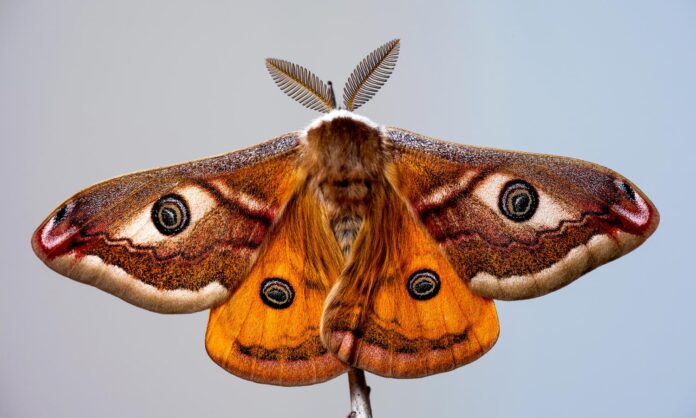A new report on the State of Britain’s Larger Moths from wildlife charity Butterfly Conservation shows a worrying 33% decline in the populations of larger moths in Britain over the last 50 years.
The report, the last of which was released in 2013, pulls on tens of millions of records gathered through the Rothamsted Insect Survey and National Moth Recording Scheme.
The report shows that the total abundance of larger moths in Britain decreased by 33% over a 50-year period between 1968-2017. This decline was seen across Britain with a greater loss in the south (39% decrease) than in northern Britain (22% decrease).
The causes for the decline are mixed, though the common factor is human activity. Habitat destruction and deterioration resulting from changes in land management and chemical pollution are considered the major causes. More sympathetic management (e.g. through agri-environment schemes) often leads to increased abundance and species richness of moths. Artificial light at night also has negative effects on individual moths and, of course, a huge factor is climate change.
Warmer climates mean species located in southern regions are tending to expand further northwards, while also causing declines for moths that are adapted to cooler climates, one example being the Grey Mountain Carpet, which has seen an 81% decrease in distribution.
Halting or reversing species decline is an enormous task, but it’s not impossible. The report contains numerous examples of conservation success for very rare and threatened moths. Work by Butterfly Conservation, its partners and volunteers has shown real results in recent years in reversing species at risk of extinction.
Dr Richard Fox, Associate Director of Recording and Monitoring at Butterfly Conservation and lead author of the report says:
“This decline is worrying because moths play a vital role in our ecosystems. They are pollinators of many plants, with some wildflowers, such as orchids, relying on visiting moths for reproduction. They also provide essential food for thousands of animal species, including bats and many familiar birds. We’re lucky enough to have almost 900 species of larger moths in Britain (including micromoths Britain has a total of 2,600 species). Because moths are dwindling, we can be pretty sure that other wildlife are also in decline and that our wider environment is deteriorating.”
You can Read the full State of Moths report here.







